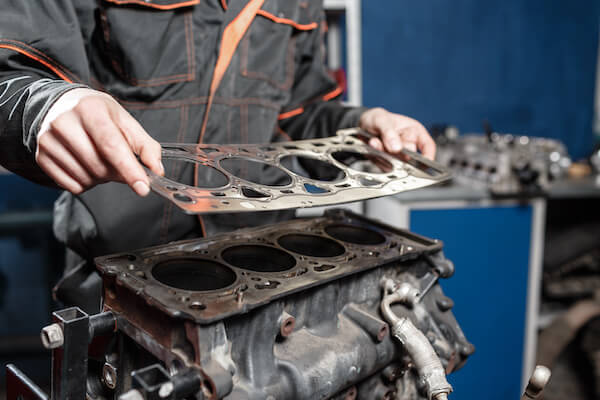
What is a Head Gasket
Between the cylinder head and the engine block lies a head gasket, which is an important component. The engine of a vehicle is divided into two sections: the engine block, which houses the pistons and cylinders, and the cylinder head, which houses valves, spark plugs, and other components.
The head gasket, which sits between these two engine elements, is responsible for sealing the internal combustion process and preventing any fluids from leaking or mixing. The head gasket seals the combustion chamber of the engine, allowing your car to produce the necessary compression to keep your engine running at peak performance. It also prevents coolant or oil from leaking into other areas of your engine, which might cause it to overheat and catch fire.
Causes of a Blown Gasket
Head gaskets can explode at any time and need to be fixed promptly. Damage to the engine might occur if the driver continues to drive a car with a blown gasket in place. In order to keep pressure in an engine, a gasket must be employed. There are few symptoms other than the engine losing significant power when the gasket explodes, indicating that there has been a rupture in the gasket's sealing capability. Furthermore, oil and coolant channels that shouldn't be leaking may do so. Overheating can occur when coolant gets into the combustion chambers, diluting or mixing with the engine oil, and lowering the cooling capacity of the cooling system.
Symptoms of a Blown Head Gasket
There are three main fluids in an engine: gasoline, antifreeze, and motor oil. Gasket failure opens the combustion chamber to any and all fluids. Several of the following things can be observed, though not necessarily all:
- Coolant or oil entering the combustion chamber indicated by the presence of white, blue, or grey smoke.
- A lack of or reduced coolant, which causes overheating. Hydrocarbons in the cooling system also contribute to the problem.
- Oil that appears to be chocolate milk in hue, which indicates that coolant has mixed with oil in the engine.
- Lack of compression that causes sputtering, lower power, and a decrease in fuel economy.
If you notice any of the symptoms mentioned that may indicate your vehicle has blown a head gasket, don't wait to have an inspection. Make an appointment at Bimmer Recue right away!
Make An Appointment